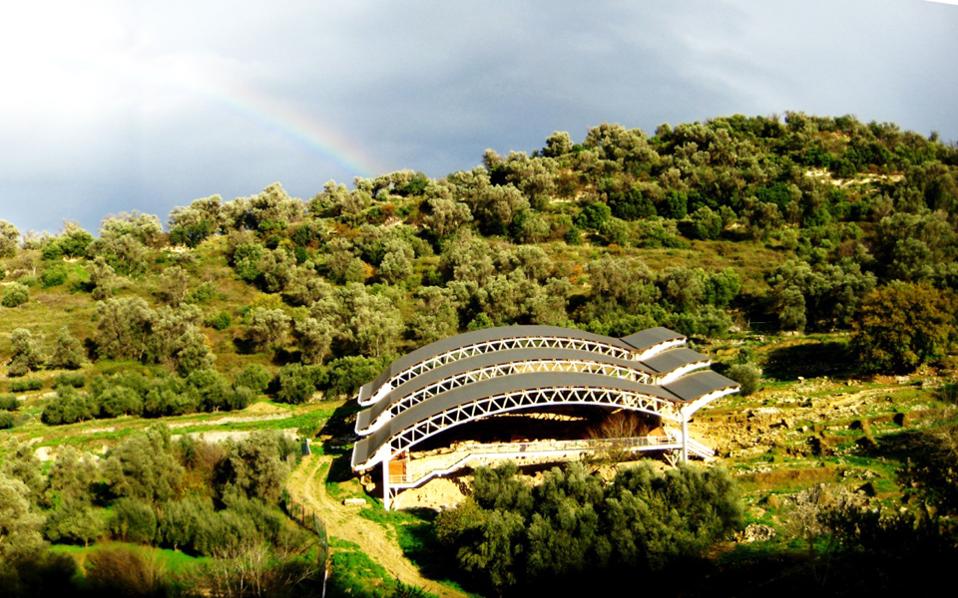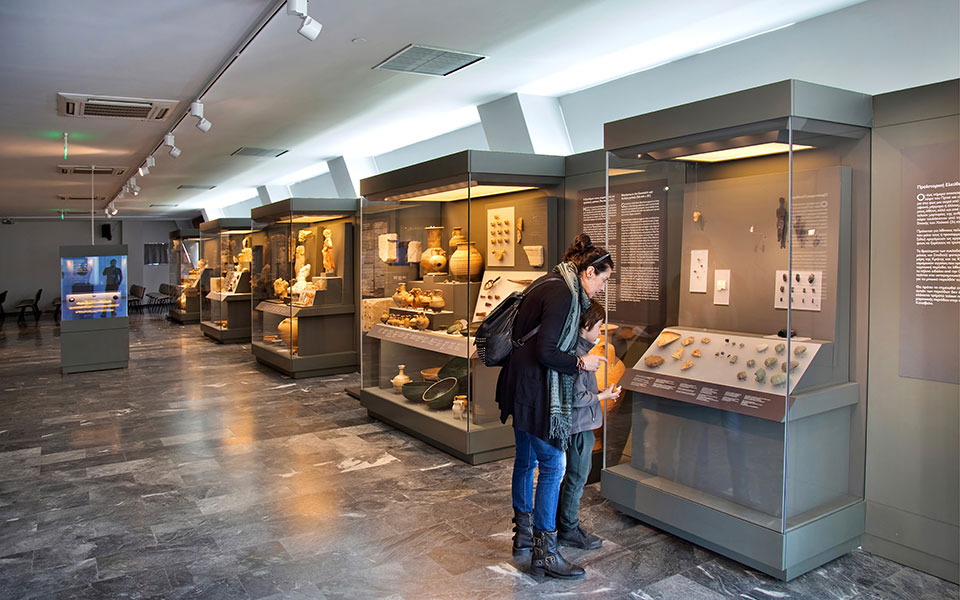The museum at the archaeological site of Eleutherna (Eleftherna), the first of its kind on Crete and the fourth in the country, has every reason to pop the corks on its third anniversary this summer, as visitor numbers keep rising. It is even popular among foreign visitors outside the summer season, says museum director Nicholas Stampolidis, a professor of archaeology at the University of Crete and also director of excavations at Ancient Eleutherna.
“We get a steady flow of tourists from November through March, mainly from the Scandinavian countries, Germany and France,” he says, adding that the museum receives some 800 visitors a day during that period.
The institution stood out from the get-go, not just because it transports visitors to the dawn of the Hellenic civilization and Homer’s epics with thousands of fascinating finds displayed in a beautiful museum located next to the archaeological site, but also because the exhibits are constantly being changed with the addition of new and older finds from the dig, making each visit a new experience.
Its third birthday this year is being celebrated with the temporary exhibition “Cretan Cities: The Testimony of Coins,” which is organized in partnership with Crete’s antiquities ephorates and the Alpha Bank Numismatic Collection.
The exhibition comprises 124 gold, silver and bronze coins from an island that had an impressive 40 mints producing coins during Classical and Hellenistic times.

“We are showing coins from every city in order to underscore not just the local wealth but also imports from other parts of Greece. Apart from prolific traders, the Cretans were also excellent archers and mercenaries, and brought in coins from foreign lands,” explains Stampolidis.
“These small samples of Crete’s sophisticated arts and culture are also samples of the local identity, which transcended the boundaries of the city and made itself known to the rest of the island, but also to the country,” he adds.
The illustrations on the coins provide valuable information concerning mythology, economic practices, dietary habits, commerce, religion and art.
“They tell us about the identity of the Cretan cities,” says Stampolidis. “They even advertise the locals wines, which were renowned, and the sweet wines especially so, as they were exported in large quantities to Rome during Hellenistic and Roman times. Getting a coin from a transaction meant that someone would be treated to, say, an image of the plane tree of Gortyn, which symbolized Zeus’ affair with Europa and their first encounter. After all, he had abducted her from the shores of Phoenicia and brought her to Crete. It really was a marvelous way of advertising Crete and its products,” he adds.
The exhibition also includes a multimedia application designed by the Institute of Computer Science (ICS) at the Foundation for Research and Technology – Hellas (FORTH), which offers visitors blown-up images of the coins on display and additional information about them. It allows them to design their own coin too.
There is also a fully illustrated catalogue, in Greek and English, containing rich photographic material.
This article was originally published at ekathimerini.com.











